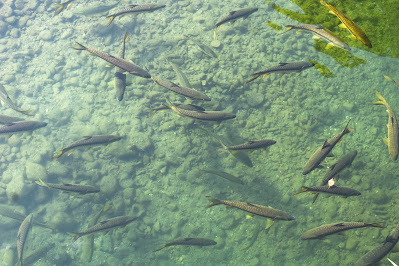The Asia-Pacific Association of Agricultural Research Institutions (APAARI) has distributed this Success Story on Rainbow Trout, Oncorhynchus mykiss, which has effectively been tested and advanced for business creation by the Nepal Agricultural Research Council (NARC) in the land-locked uneven realm of Nepal, where per capita fish utilization is by and by exceptionally low and individuals dwelling in profoundly territories do require great wellspring of protein rich eating regimen through enhancement of horticulture.
Consequently, the types of cold water fish, Rainbow Trout, was distinguished for innovative work in Nepal and for this reason, the examination coordinated effort was looked for from JICA, Japan. It has now effectively came to a collect level, both in the public authority and private areas. Rainbow Trout has extensive degree for development in Nepal and could turn into a significant fare acquiring item in not so distant future.
In this distribution, insights about innovative work on Rainbow Trout, an important virus water fish have been introduced.
Presentation
Nepal is a Himalayan Kingdom arranged at an elevation differing from 60 m in the south to 8,848 m in the north and is physio-graphically and agro-naturally exceptionally assorted. It is perhaps the most extravagant country on the planet, having about 2.27% of the world water asset (CBS 2003); around 5% of the absolute space of the nation is involved by various freshwater sea-going territories (Bhandari 1992). Out of 818,500 ha all out water surface region, there are around 6,000 waterways and streams moving from north to south adding up to around 45,000 km long and covering an expected space of 395,000 ha; these streams and creeks include about 48% of the complete water assets (FDD 1998). Subsequently hydroponics in Nepal relies completely upon the double-dealing of inland water bodies for example waterways, streams, lakes, supplies and lakes. Lake fish culture is the significant piece of hydroponics.
The significant species utilized are warm water carps, specifically, Rohu (Labeo rohita), Bhakur (catla) and Naini (Cirrhina mrigala) including colorful carps; normal carp (Cyprinus carpio), silver carp (Hypophthalmichthys molitrix), bighead carp (Aristichthys nobilis), and grass carp (Ctenopharyngodon idella); these are under business culture basically in the southern Terai plain.
Enclosure culture of these species has likewise been advanced in certain lakes and repositories in the bumpy area. However per capita fish utilization in Nepal is extremely low (1.543 kg/yr) (DoFD 2002) contrasted with different nations in the Asia-Pacific locale and fisheries support just about 2% of the
Horticulture GDP in the country (DoFD 2001), there has been a public drive to advance/broaden hydroponics in chilly territories for the mountain cultivating networks to produce pay.
A chilly water fish, the rainbow trout (Oncorhynchus mykiss) has been acquainted with grow hydroponics in the slopes of the nation by using the cool water assets accessible. This example of overcoming adversity momentarily portrays the result of innovative work endeavors set forth by the public program versus the accomplishments



